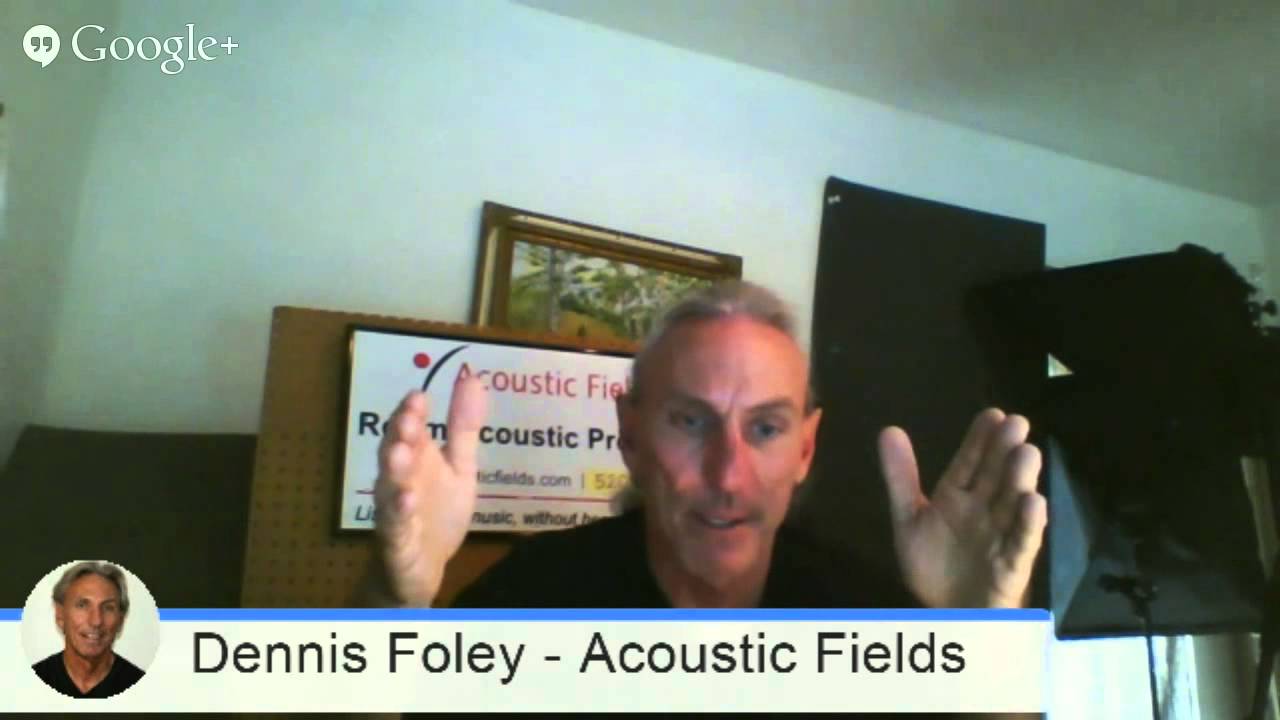A sound absorption coefficient is a coefficient that, for those of you out there that understand math, it stands for a value. So a coefficient represents a value and they usually measure sound absorption coefficients starting at 125 cycles to 4,000. That’s a standard test and that’s how much energy at that frequency a given material absorbs.
So you can look at the data and say well at 250 this sample size of ‘X’ absorbs 40 percent of the energy thrown at it at 250 cycles or maybe a hundred percent at 500 cycles. That doesn’t mean you’re absorbing a hundred percent of 500 cycles in the room, only for that sample size. People get confused about that, so you always have to look at the sample size when you look at absorption coefficients.
So our low frequency sample size is 72 square feet. Well that was done by Riverbanks labs on purpose, there’s all kinds of technical reasons for that. You’ve always got to look at the sample size, then to figure out how much you need of it in the room you take the absorption coefficient by the problem that you have and then convert it to square footage to manage that particular problem. So it’s a really helpful tool to help you figure out how much treatment that you’re going to need.
So they’re really good to have. If you are looking at products that don’t have that please don’t buy them. I saw a company the other day that said that they have a bass trap that’s tuned to 20 cycles. Twenty cycles, off the top of my head I think that’s a 56-foot long wave. You know what a 56-foot long 20 cycle wave is going to do when it sees that product in front of it? Nothing. It’s going to keep going, it’s not even going to blink. It’s probably going to be a little upset that you even tried to fool it, you know.
So you have to be really careful with these numbers.
Our stuff is all tested by Riverbank labs. They’re the biggest, finest test facility I think they’re now Alion, on research or something like that. You can see our numbers here:
https://acousticfields.com//wp-content/uploads/2012/01/ACDA-10.pdf
https://acousticfields.com/wp-content/uploads/2012/01/ACDA-12.pdf
So always get the numbers. If they don’t have the numbers don’t take opinion for it, you know. You can figure it out if it doesn’t have numbers it’s not worth buying because there are plenty of products out there that do have numbers.
Ali: And even though it’s with numbers, we’ve seen the manufacturers twist those numbers, you know. We’ve seen in certain forums some kind of run wild with their interpretation of their result. I’m not even sure they quite understand what they results are.
Dennis: Well, here’s what happened. The industry for years and years, and to be honest until we came along, the standard was a 12-inch box filled with building insulation and if you wanted more absorption you just made the box deeper. That was the industry standards to about 2 and a half, 3 years ago and then we came on board and introduced diaphragmatic absorption.
It’s in a smaller amount of space, it’s a heavier technology, it’s a more sophisticated technology and it’s 60 to 70 percent better than the old industry standard. So now there’s a new industry standard and that’s us when it comes to low frequency absorption and I think when you’re the new kid on the block and your test stuff is so good that the engineers at Riverbank when they tested it, they tested it three times because they couldn’t believe it.
They even wanted to cut it open and I said “Oh no don’t do that”. They couldn’t believe the results, so they even told me that there was absorption down into the low 30’s but they couldn’t certify that. But the fact that their test data showed it, was good enough for me and I confirmed that myself. So not to brag or anything (Ed. too late!) but there’s a new standard now in low frequency absorption. Nobody has our rates and levels, nobody. We’re 65 / 70 percent better than the biggest company out there. So it’s going to take time for people to realize that and with those new rates and levels you get a much higher quality sound cause you managed pressure better. So it’s a good way to go. I just wish I could figure out a way to make them lighter.
In Summary
I hope this discussion helped. Feel free to contact me directly at: 520 – 392 – 9486 MST or info@acousticfields.com. If you would like to learn more about room acoustics please sign up for my free videos and ebook by joining the mailing list here. And if you would like your room acoustic issues analysed for free by me then please fill in the form here and I will be happy to take a look for you.
Thanks and speak soon
Dennis








We use broadband absorption in the two most critical frequency regions in small rooms. Our Diaphragmatic absorbers, ACDA series, have…
Interesting web site and provocative introduction. Please check your copy for typos, otherwise nicely presented. I would like to see…
There is no such thing as soundproof anything especially carpet. Low frequency noise transmission requires a permanent construction fix with…
Hello Dennis! Our neighbors put a Ice Bath in their garage which is right below our bedroom and the Low…